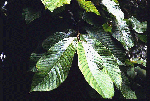Notice: Undefined offset: 1 in
/usr/home/suntracker/public_html/j4.azsolarcenter.org/administrator/components/com_easyblog/includes/post/post.php on line
3658
When the planet was first formed, it was a fiery ball of liquid and gas. As it cooled, an outer crust formed over the hot mass. This crust is the surface of the earth where man dwells. Geothermal energy is nearly as old as the Earth itself. It comes from heat being trapped in hot melted rock, called magma or lava, below the Earth's surface. When this heat energy is tapped, it is a tremendous source of power.
Geothermal energy is a renewable resource; about 95 percent of the hot water in geothermal reservoirs began as cool rainwater. When rainwater seeps through cracks in the Earth's crust, it is heated by magma and turns to steam. The steam rises to the atmosphere, cools, turns back to liquid, falls back to earth as rain and eventually seeps back through cracks to be turned back into steam.
Arizona has an abundance of low-temperature geothermal areas, or hot springs, in the southeastern part of the state. Although the majority of these areas are not suitable for generating electricity, they do have potential for heating and cooling greenhouses, nurseries and fish farms.
The two highest temperature springs in the state are Clifton and Gillard, both in the Clifton-Morenci area of southeastern Arizona. The water temperature at these springs ranges from 158-180 degrees Fahrenheit. Even though temperatures may exceed 284 degrees Fahrenheit at depth, these two sites are only suitable for low grad steam. Neither of these areas has been developed.
More on geothermal energy here.







